The museum is located on a side- street named “Hisago-Toori Street” which is one block away from a bustling Sensouji-Temple Complex consisting of “Kaminarimon-Gate”,“Nakamise shopping arcade”, “ Main Prayer’s Hall” and “5-story Pagoda”. The facade of the museum building is decorated with traditional roof tiles and impressive checkered patterns being formed by diagonal white stripes on the black background called “Namako-Kabe wall”.
They are exhibiting around 350 numbers of traditional handicrafts being classified into 45 lines throughout a year. The all exhibits originate in handicrafts of Edo Period which were uniquely developed by skillful artisans familiar with society, culture and climate of Edo City. Their skill has been handed down from generation to generation in an unbroken line to the present day.These are rooted in the daily commodities which were used by ordinary people in Edo City.
The handicrafts exhibited in this museum diverge into clothing, ornaments, furniture, kitchen utensils, wood-block prints, ritual articles, toys and etc. On weekends, artisans demonstrate their traditional craft work in front of visitors.And videos show us their crafting processes in detail.
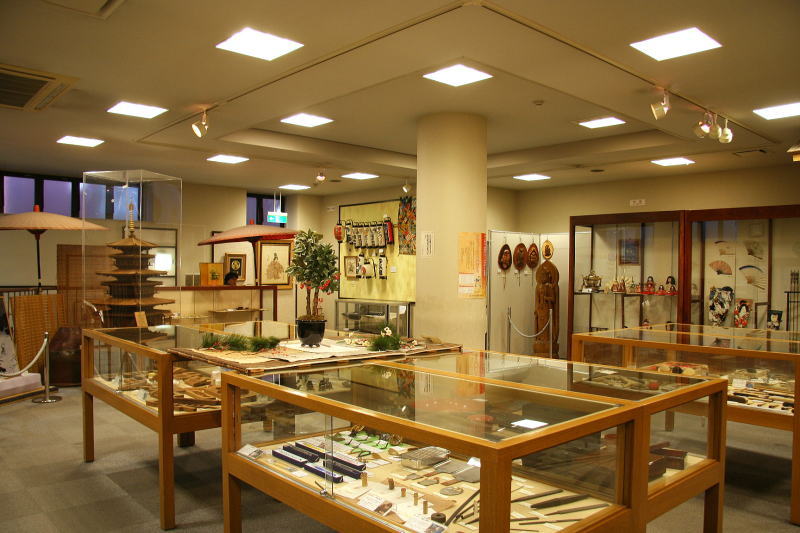
What is Edo-style handicrafts? Their origin and history.
The origin of the Edo-style handicrafts is traceable to those produced by master craftsmen who had been recruited from Kyoto, Sakai and Oomi areas in west Japan by Tokugawa Shogunate in Edo Period.
Ieyasu Tokugawa was appointed Shogun by Emperor and established the Tokugawa Shogunate in Edo City to rule Japan in 1603, he set about development of the social infrastructure in Edo City such as land reclamation, linkage of rivers via canals,facilitation of water supply and construction of five main roads.
Corresponding to these developments, Edo City gathered a lot of warriors, artisans and merchants. At the same time a large number of feudal lords’ residences, temples, shrines and merchant’s houses were built around Edo Castle which was located at the center of Edo city. As a result the surrounding areas were gradually urbanized. The society was stabilized and the economy developed smoothly.
In the expansion of the Edo city, Sensouji Temple was designated as a tutelary temple of Tokugawa family by the first Shogun, Ieyasu Tokugawa. Because of this, Asakusa further developed as temple town under his patronage. And also Kuramae district in Asakusa was regarded as a logistical important hub of waterway transportation on Sumida River.
Tokugawa Shogunate stored a large amount of rice in the warehouses at Kurume. Those rice were collected as land tax being paid by feudal lords across the country. Furthermore they deployed their own troop at Ishihama district in Asakusa to protect Edo castle against enemies coming from north-east.
Under the circumstances Asakusa attracted more people and became the most flourished area in Edo City.
A big demand for daily commodities was supplied by groups of craftsmen which were led by master hands coming from Kyoto, Sakai and other rural areas.
In the early Edo Period, these groups of craftsmen engaged in public duties charged by Tokugawa Shogunate. They formed their own residential districts around Kanda and Nihonbashi areas according to their occupations, and enjoyed the privilege of tax exemption favored by the Shogunate. There used to be various craftsmen’s residential districts of carpenters, wood carving craftsmen, plasterers, Tatami-carpet makers,
rice dealers, drapers and etc. In the late 17th century, they almost completed the public duties. When a disaster struck in the form of a big fire and it burn down their residential areas, they were driven to disperse into the surrounding areas of Edo city. And then they gradually started to manufacture daily commodities for ordinary people in downtown in Edo city.
This resulted in gathering craftsmen in Asakusa and Ueno areas which were densely populated.
In the early 17th century, they manufactured daily commodities for warriors and wealthy merchants to suit their taste with their technical wizardry. Those commodities were Kyoto and Chinese styles which were encouraged in dynasty culture.
Entering 18th century, the financial condition of warriors was getting worse and instead of them the wealthy merchants played a leading role in Edo culture In late Edo Period (In the early 19th century) townspeople’s culture flourished in Edo City. They valued refined urban manners and spirit called “IKI”, “TSUU”,and “INASE” in Japanese. “IKI” means chic, elegance and stylishness, involving simple and plain tastes. “Tsuu” represents people who are conversant with some object. They behave with savior faire.
“INASE” stands for a lively and stylish looking which observed on dashing young men in fish market. The term of “INASE” is originated in their hair style which forms the triangular dorsal shape of a fish called “INA” (young striped mullet).
These terms express aesthetic and moral ideas of townspeople in downtown of Edo city.In the meanwhile, Tokugawa Shogunate issued sumptuary laws with a frequency to minute details and scope restraining all social classes of people from luxury and extravagance.The laws refer to daily necessities for the ordinary people’s life. Taking it into consideration, most craftsmen managed to manufacture their products so that those appearances do not look showy but simple and chic, and they tried to express their aesthetic idea hide cleverly out of sight. The style was favored by townspeople who respect state of “IKI”.This manufacturing idea acted on the wider range of handicrafts such as textile fabric, dyeing, china & porcelain, cloisonné, lacquer ware, woodwork, bamboo craftwork, metalworks, Buddhist & Shintoism altar fittings, Washi-paper, stationery goods (writing brush-Japanese ink-Inkstone-Abacus), Stone craft, Wood block prints, Dolls, Toys, paperfolding fans, round fans, umbrellas, paper lanterns, ritual goods, traditional musical instruments, goods for festival, kitchen utensils, their relevant manufacturing tools, materials and so on.
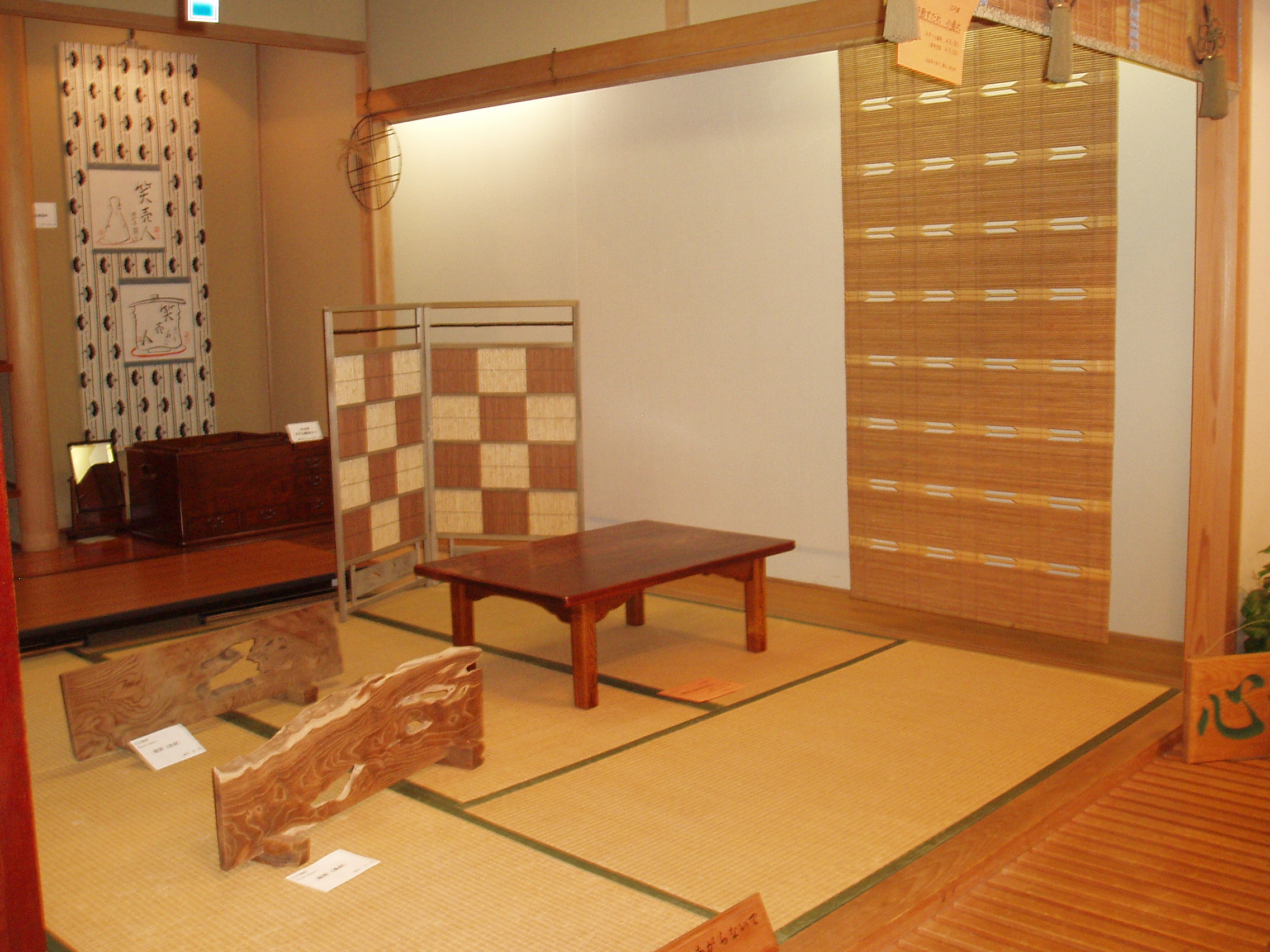
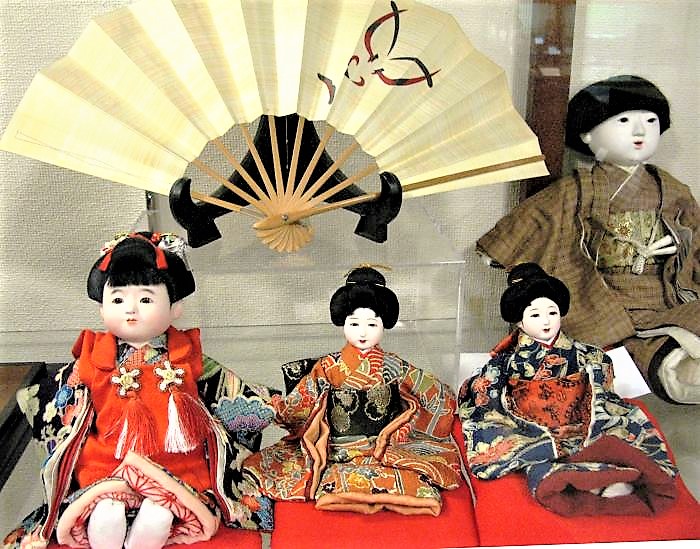
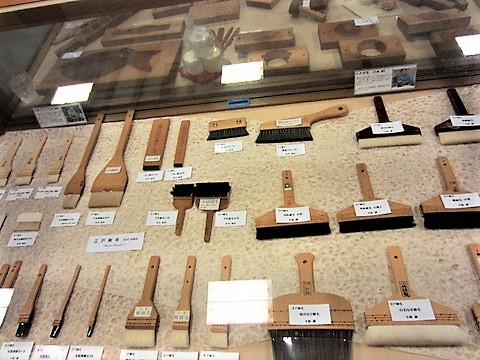
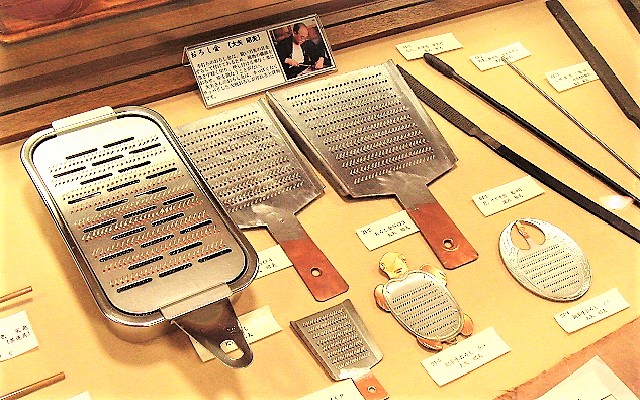
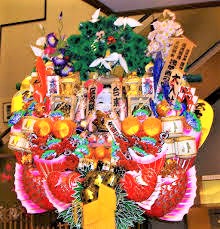
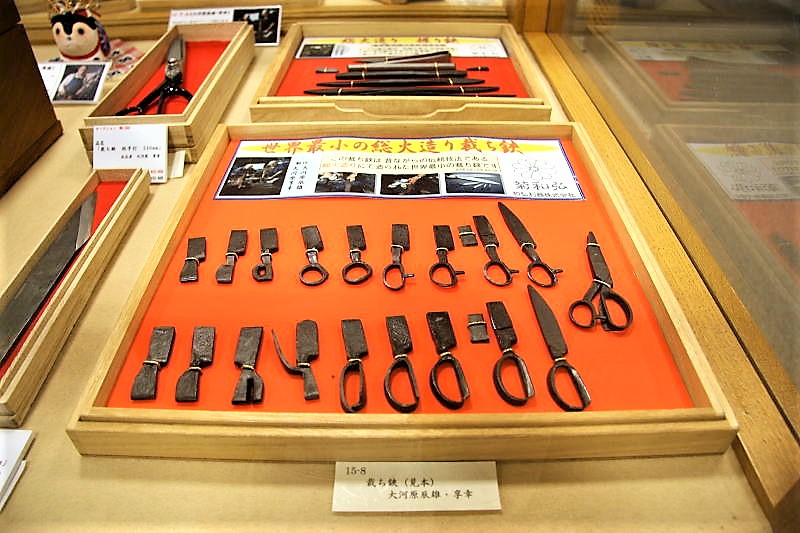
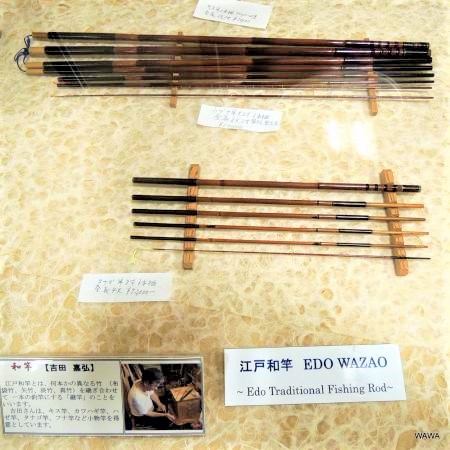
For instance, the furniture is assembled by skilled craftsmen in a unique wood processing method with tongue and tenon joint, sometimes with miter joint, without using nails. The joint works are arranged at the portion out of sight. And they make fine adjustments in shaving and planning of board according to the changes of temperature and humidity.
Their technique and skill have been handed down to posterity in craftsman’s field since Edo Period. We can find out the craftsman’s spirit to manufacture a fine article with Edo-style aesthetics as well as with its excellent durability and functionality. Edo-style handicrafts might provide us peaceful and tasteful mind in our daily life. “Edo Shitamachi Traditional Crafts Museum” is open year around. We can enter it free of charge. When you visit Acacias, please drop by the museum and appreciate Edo-style handicrafts.
Denbouin Alley
Heading toward south from this museum for about five hundred meters, we can get to a small alley named “Denbouin-alley” running east and west across Nakamals Street.
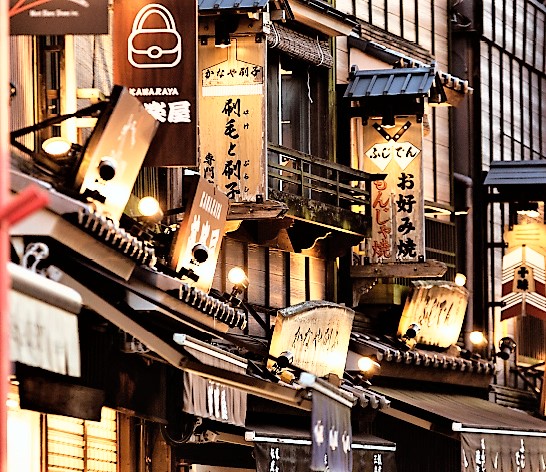
The dolls of 5 men thieves, called white–wave 5 are striking unique poses on the roofs or the eaves of the shops. They are famous 5 star-characters in Japanese traditional play,Kabuki. The scenario of the play was mostly written by Kawatake Mukai who was a prominent playwright in Edo period. He was living in Asakusa where there used to be 3 big theaters of kabuki play in the late Edo Period. People call him Japanese Shakespeare.
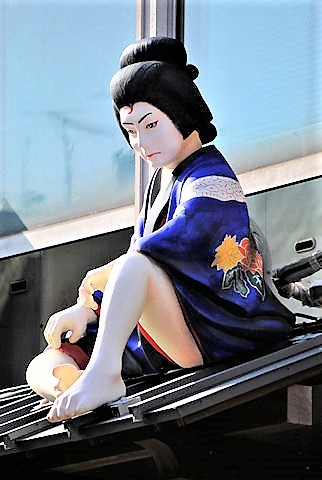
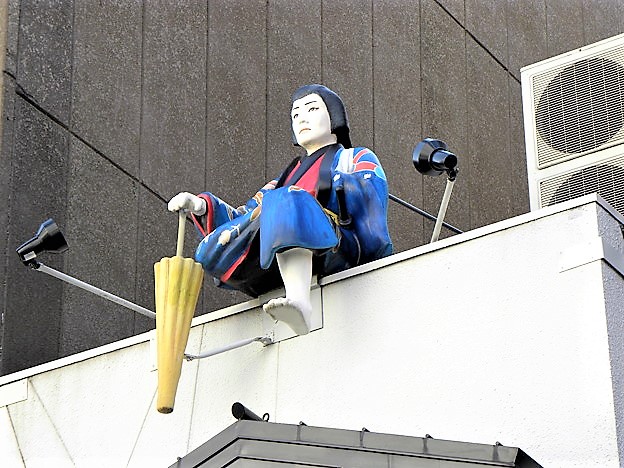

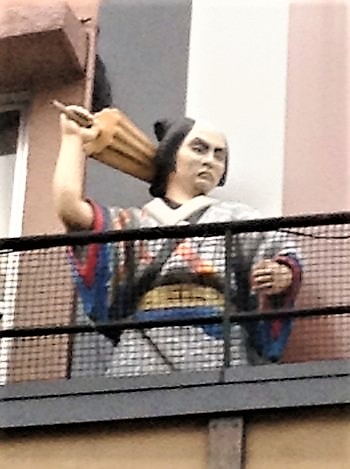
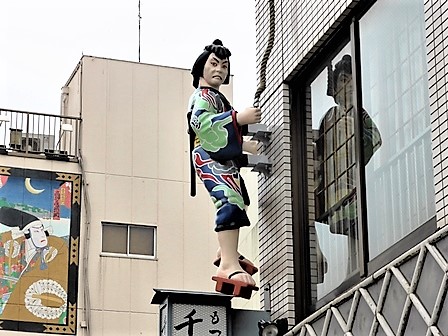

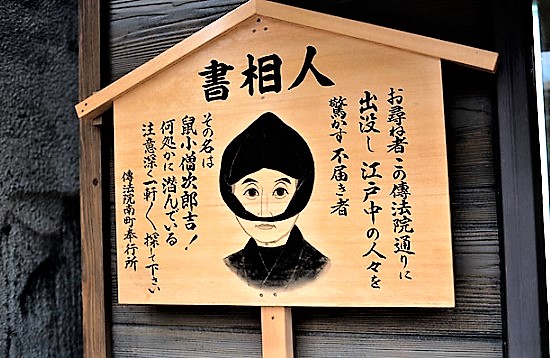
In Edo City serious fire disasters happened frequently. Through Edo Era for 267 years,the city was struck by 49 big fires which burnt down most of the city to ashes.They say “Fires and quarrels are the flowers of Edo” in order to characterize the Edo city.It appears that people in Edo were paying special attention to fire prevention. We can find out various fire prevention measures such as fire watching towers, water buckets/barrels and etc. around their houses.
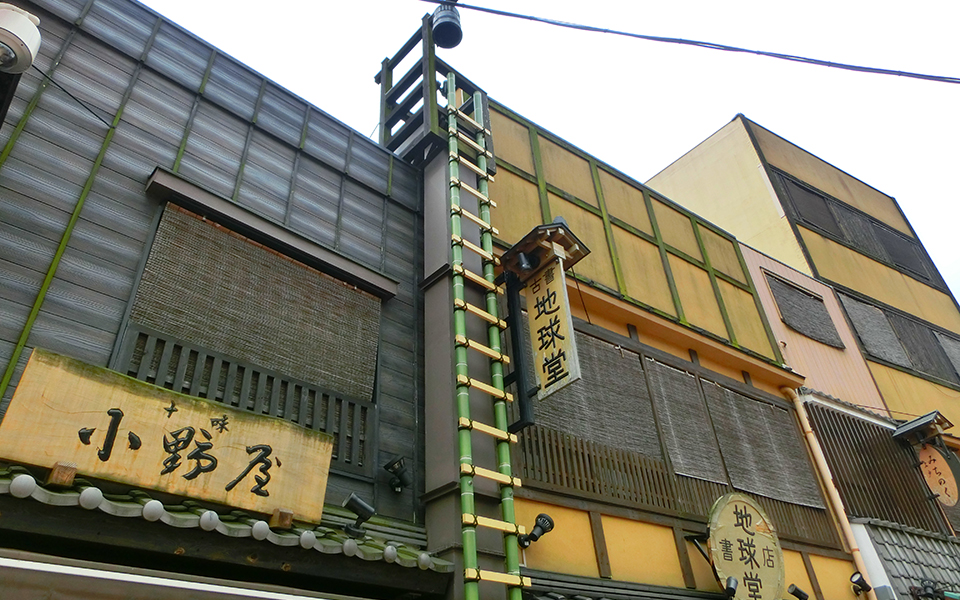
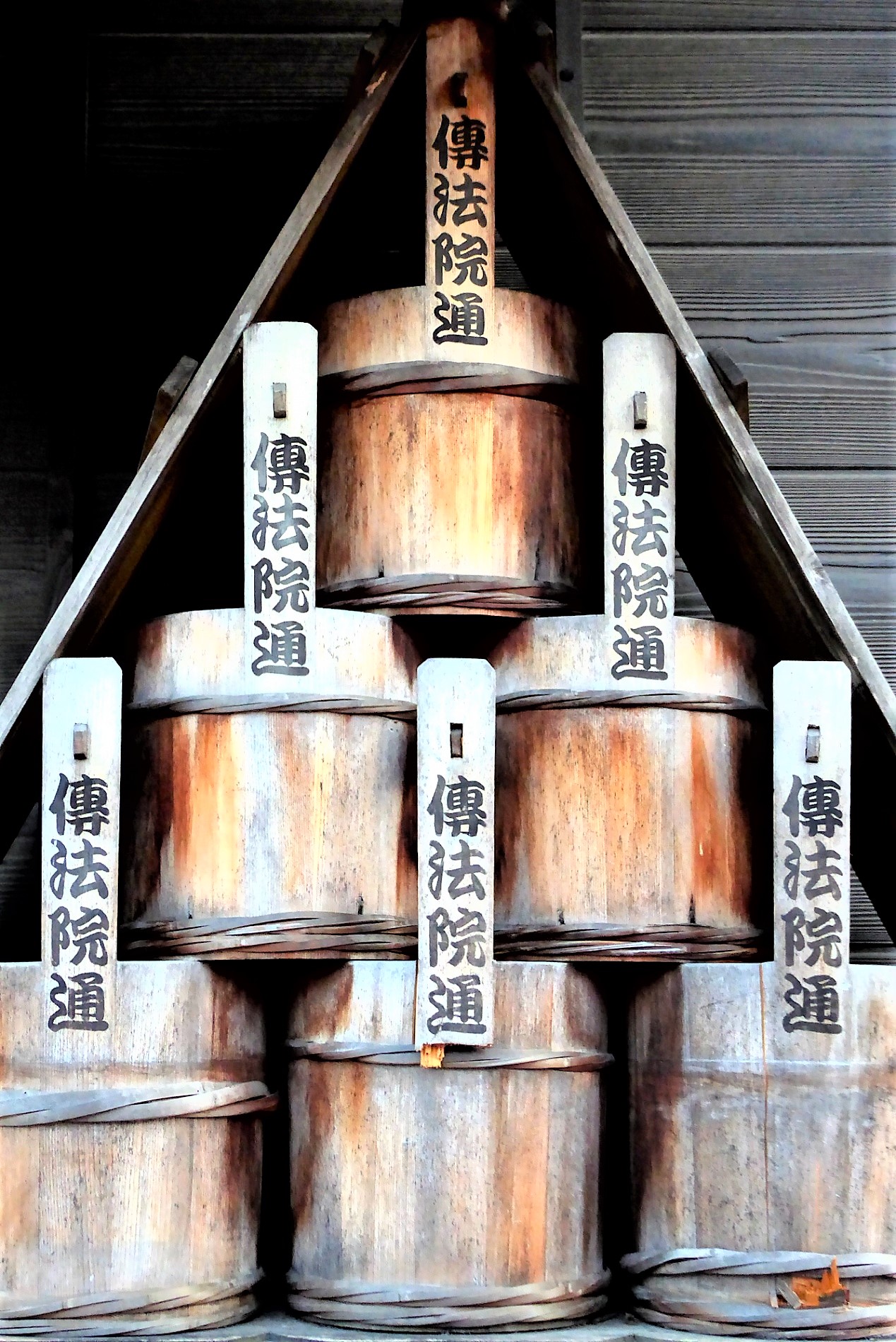
Shops along this alley are dealing various articles of Japanese traditional goods such as Japanese traditional clothing (Kimono), accessories, fine tooth combs made of boxwood, facetted glass articles, hand towels, shop sign banners dyed with Bengal red (dyed with red colcothar), various brushes, handiwork made of tortoise shell.The Denbou-In alley is densely packing culture of merchants in downtown in Edo city.
